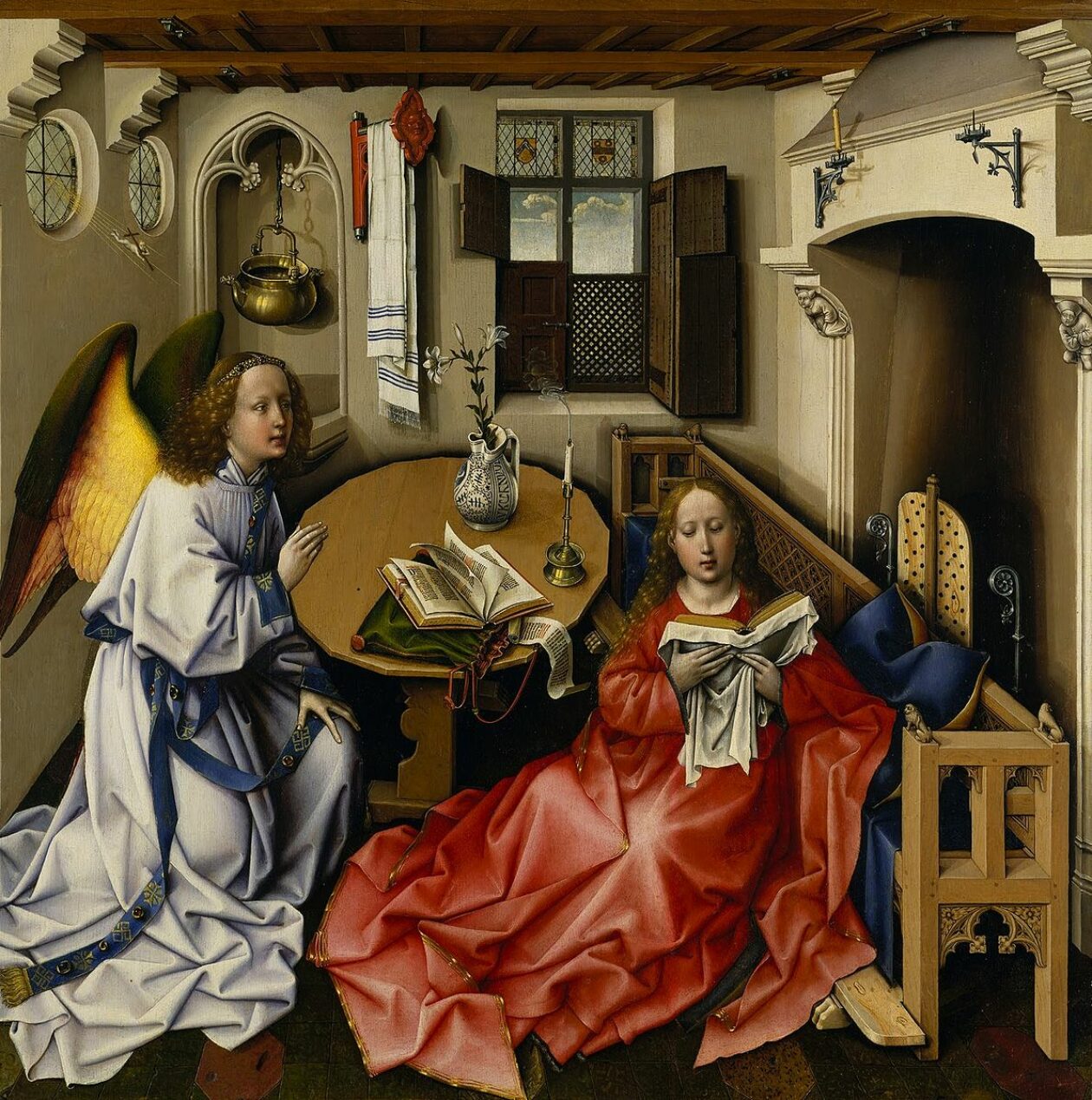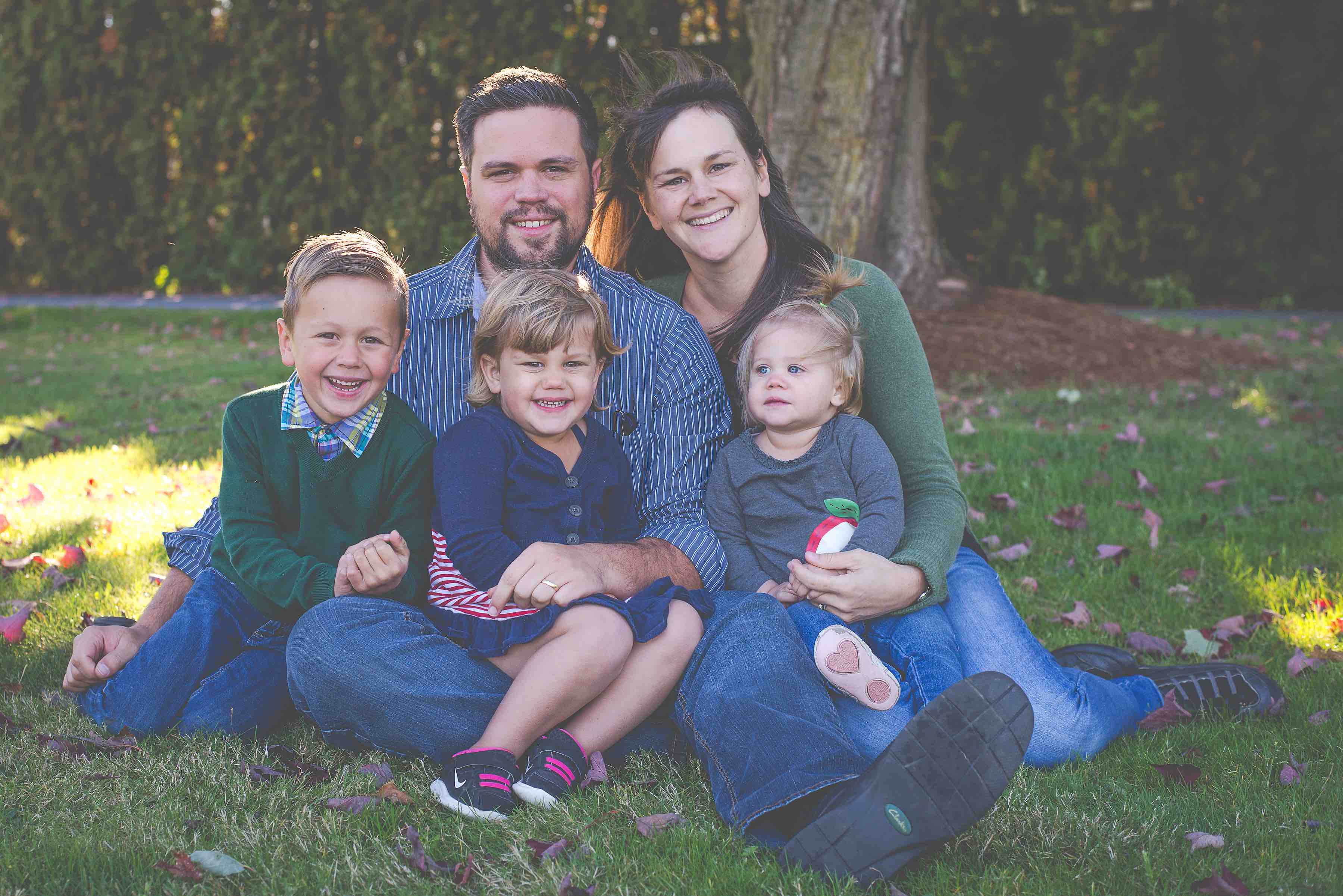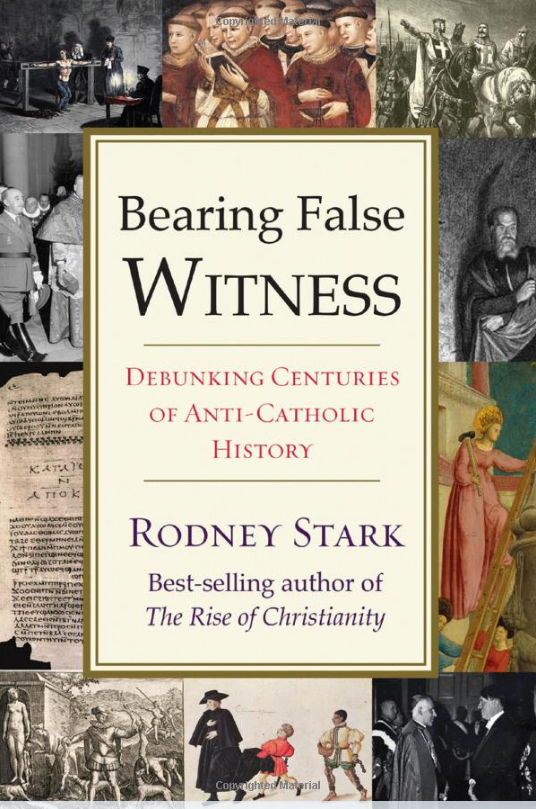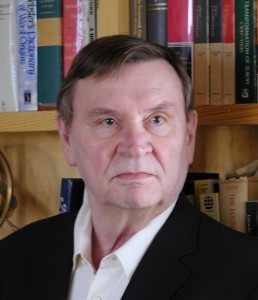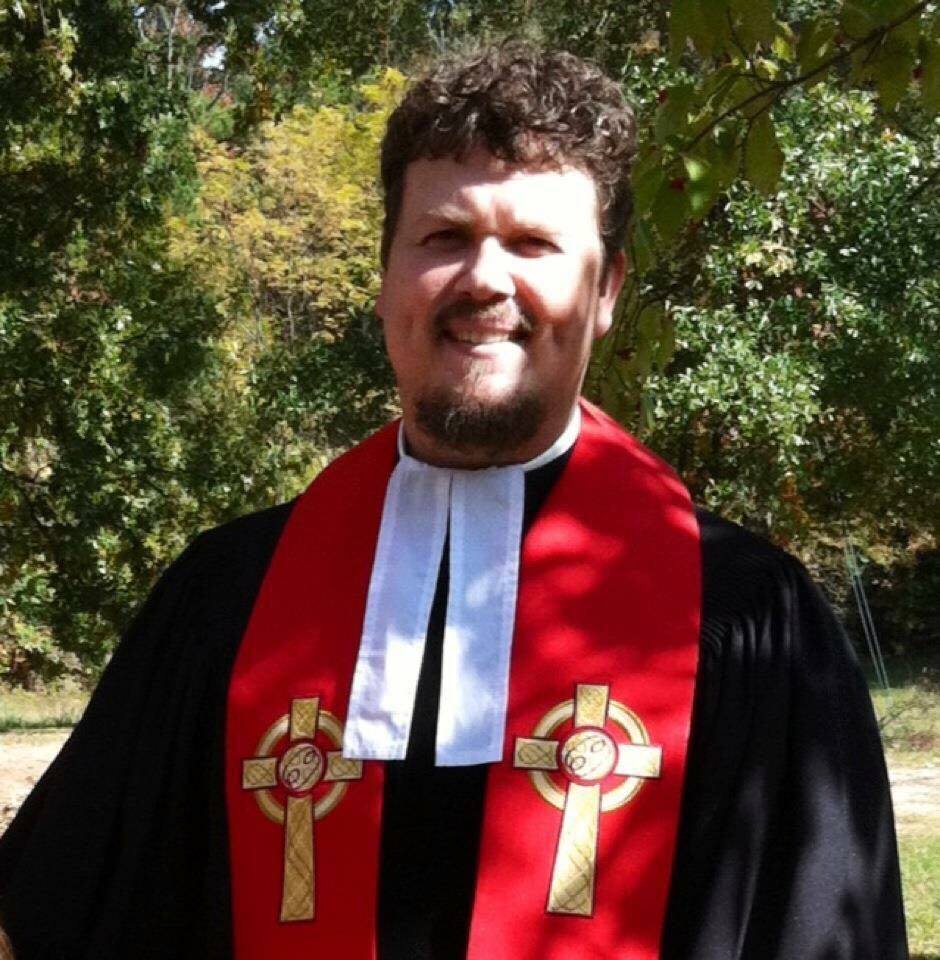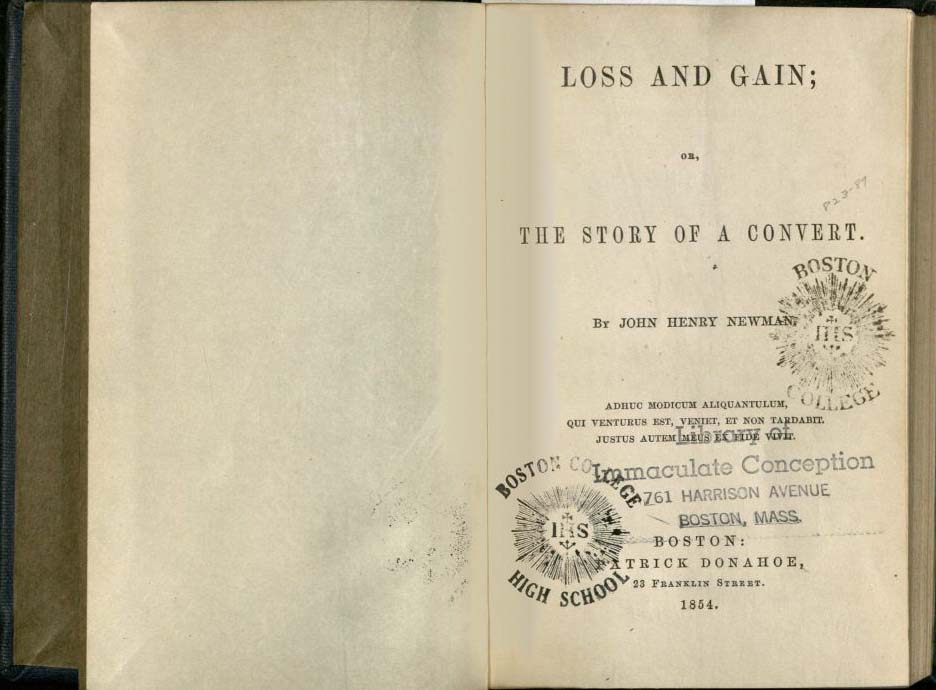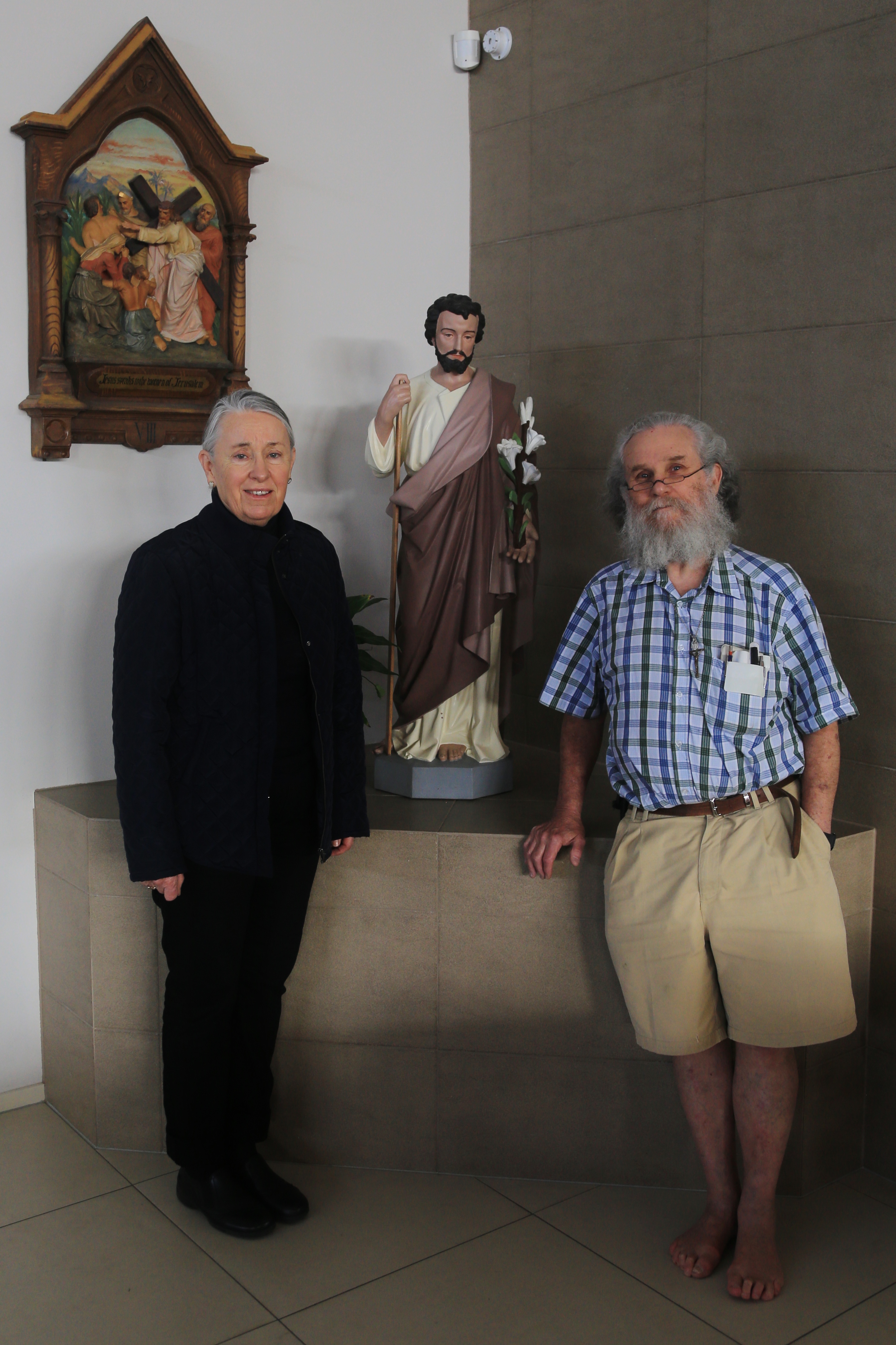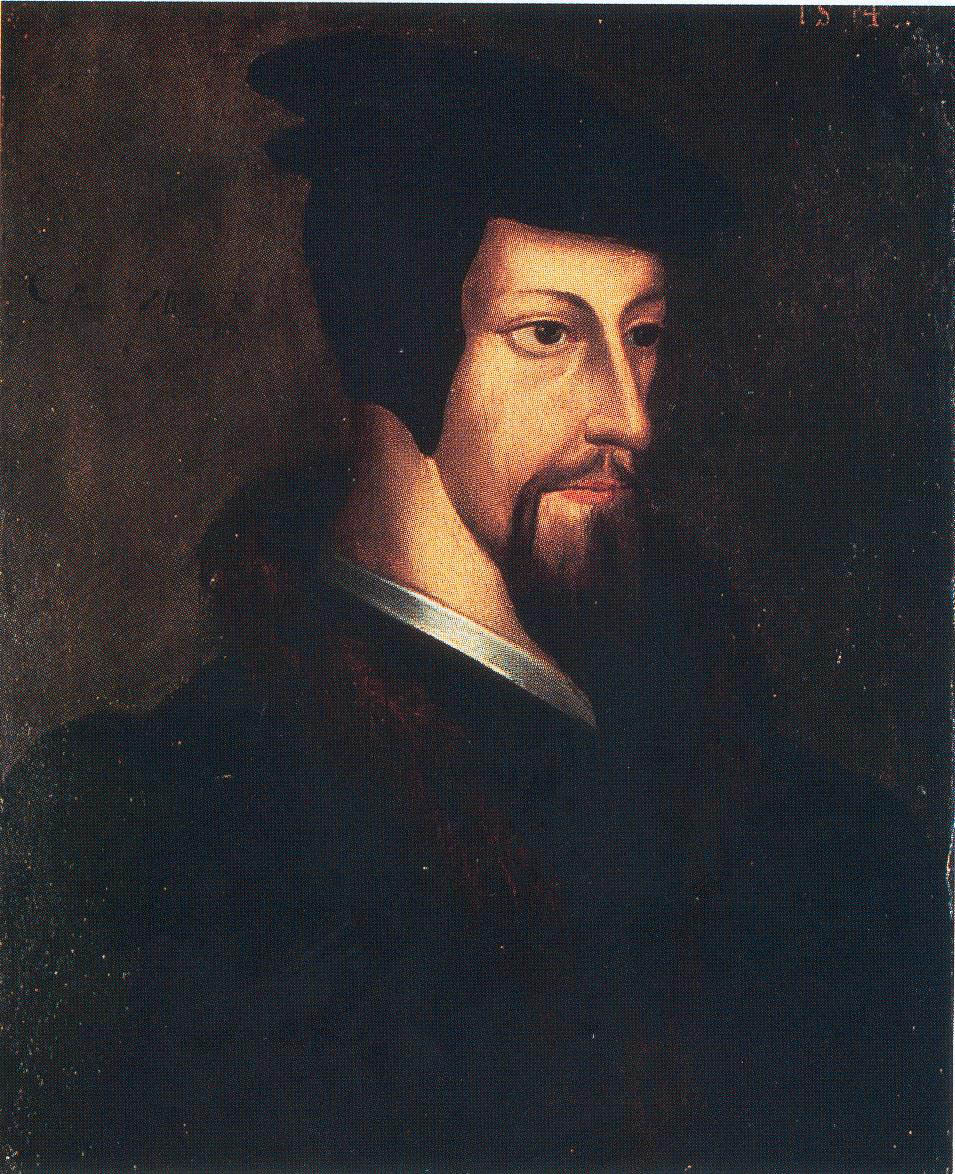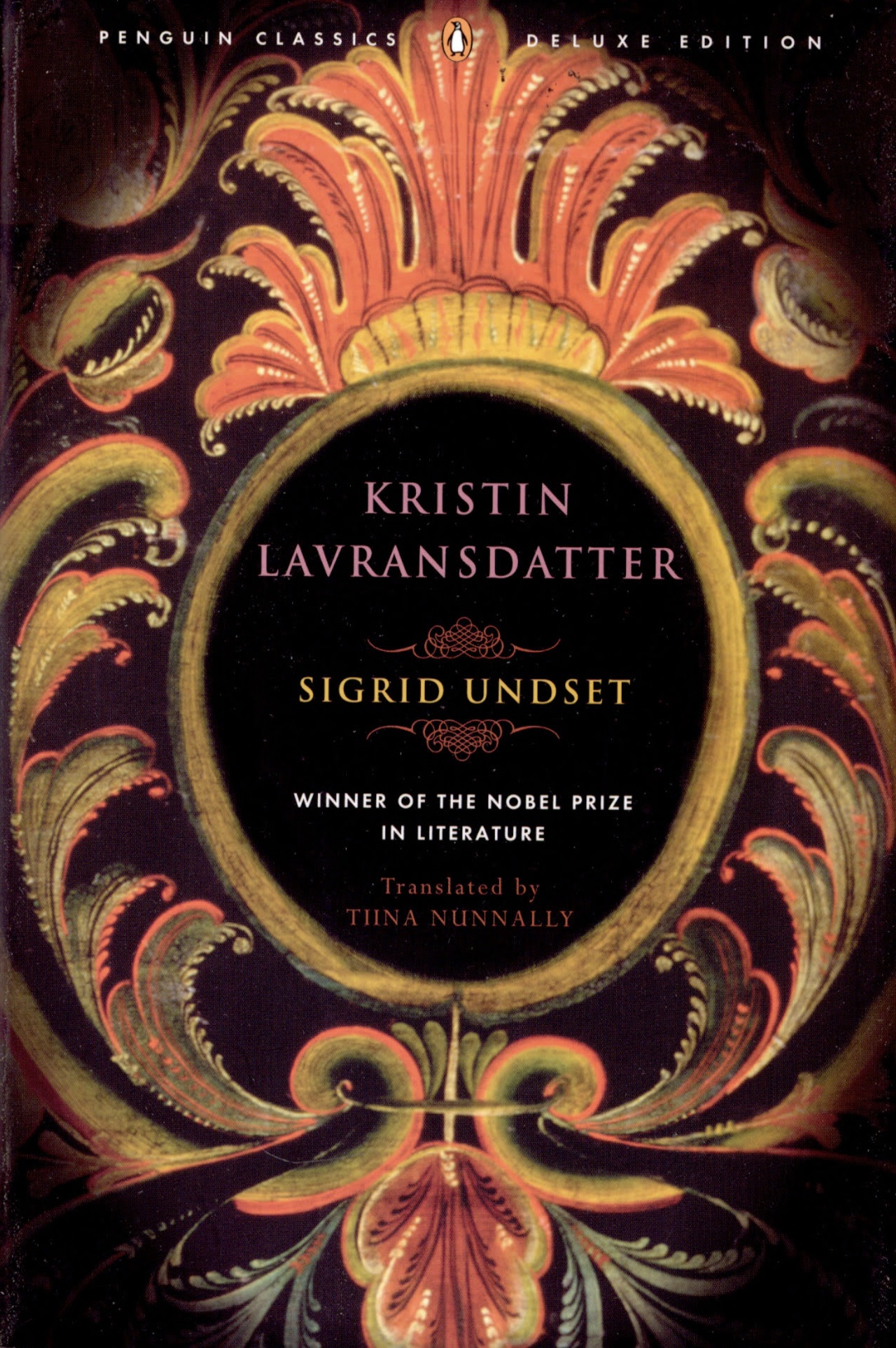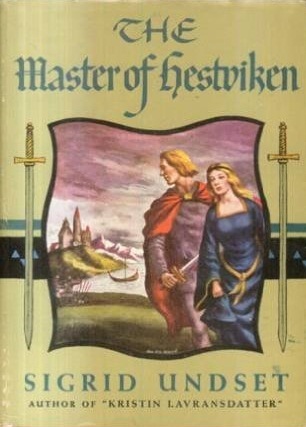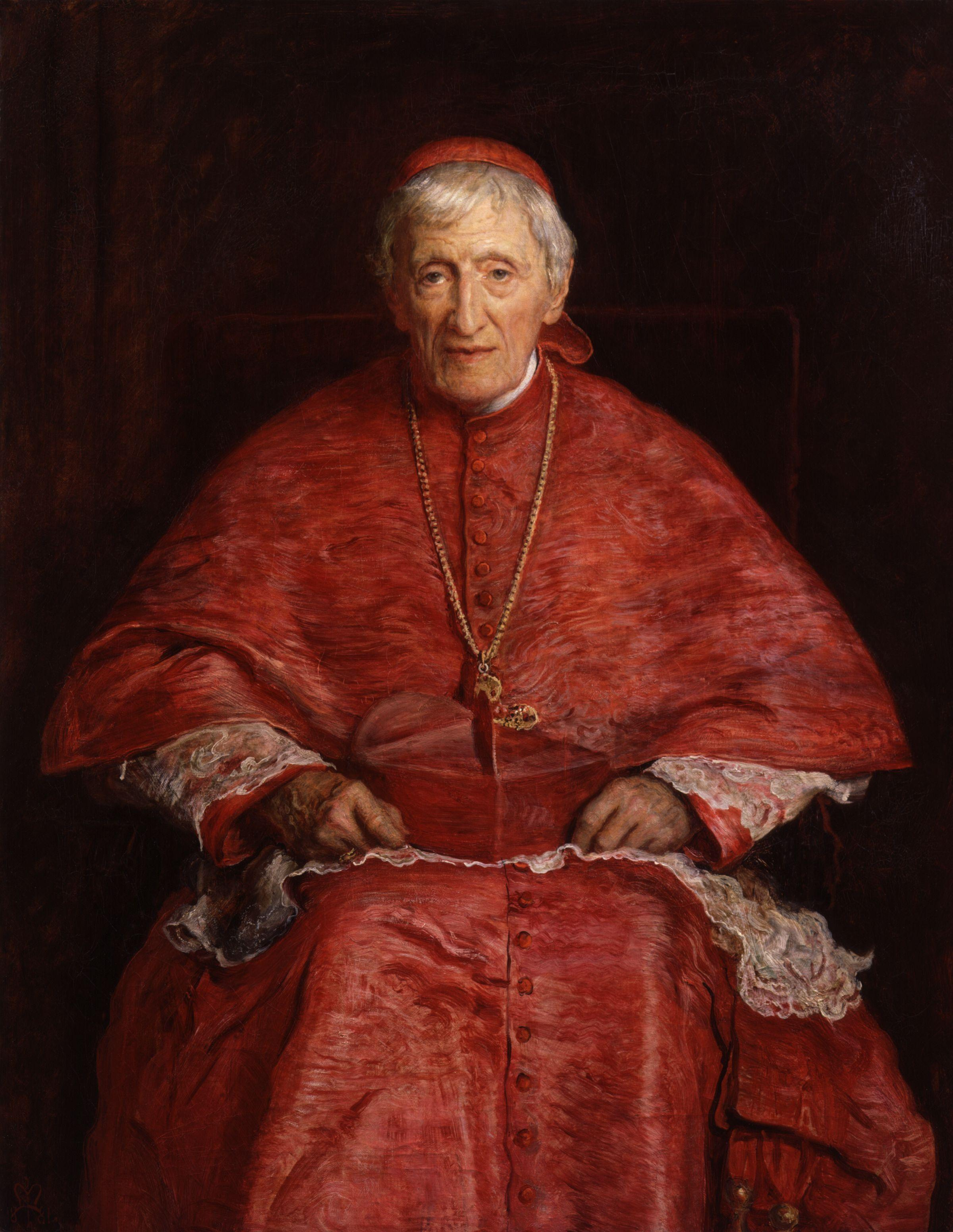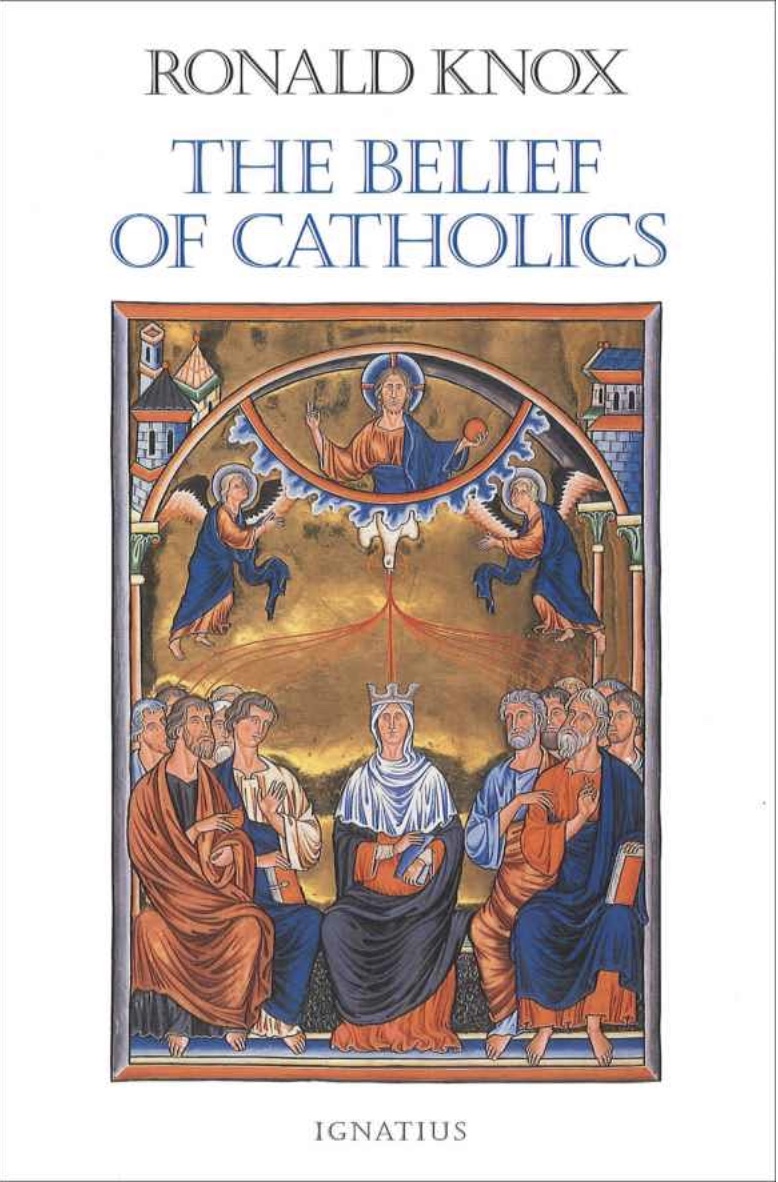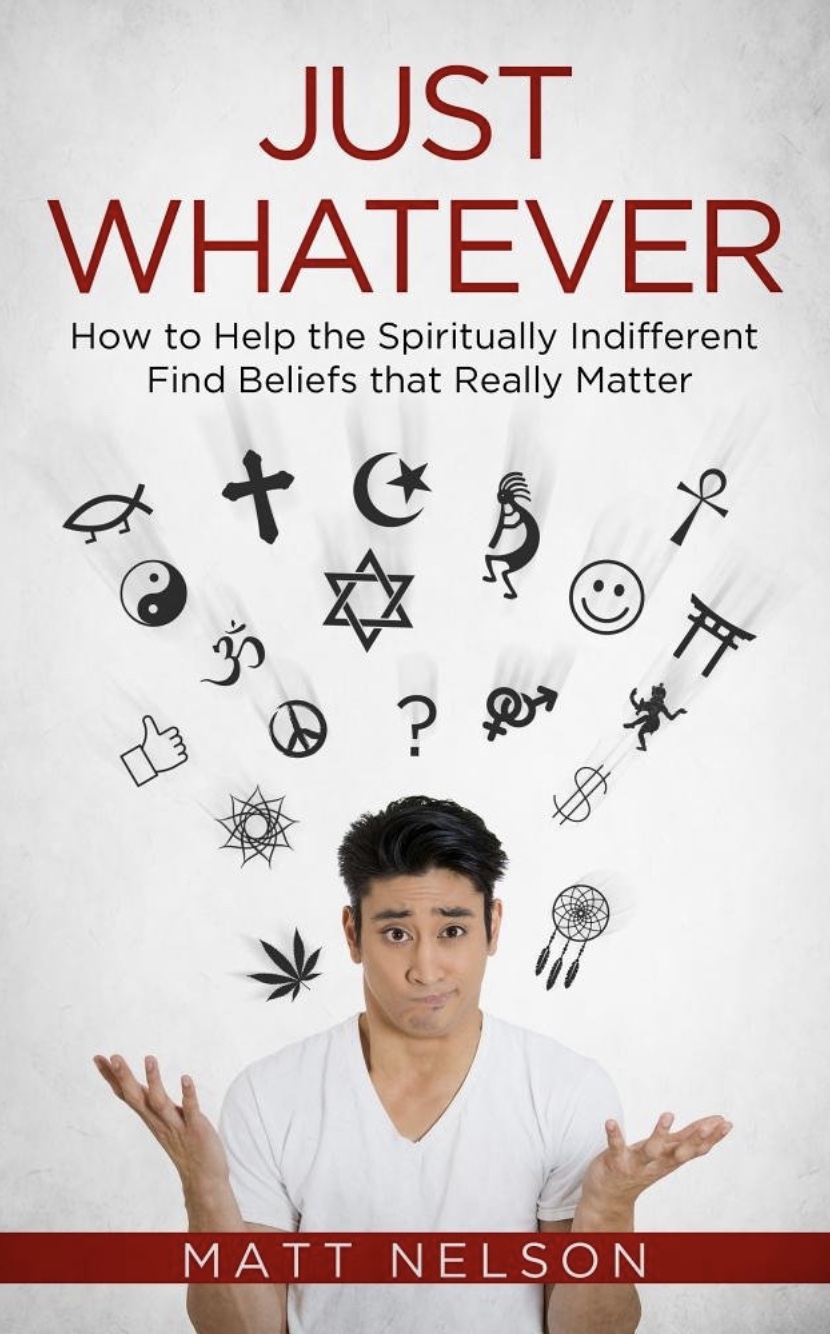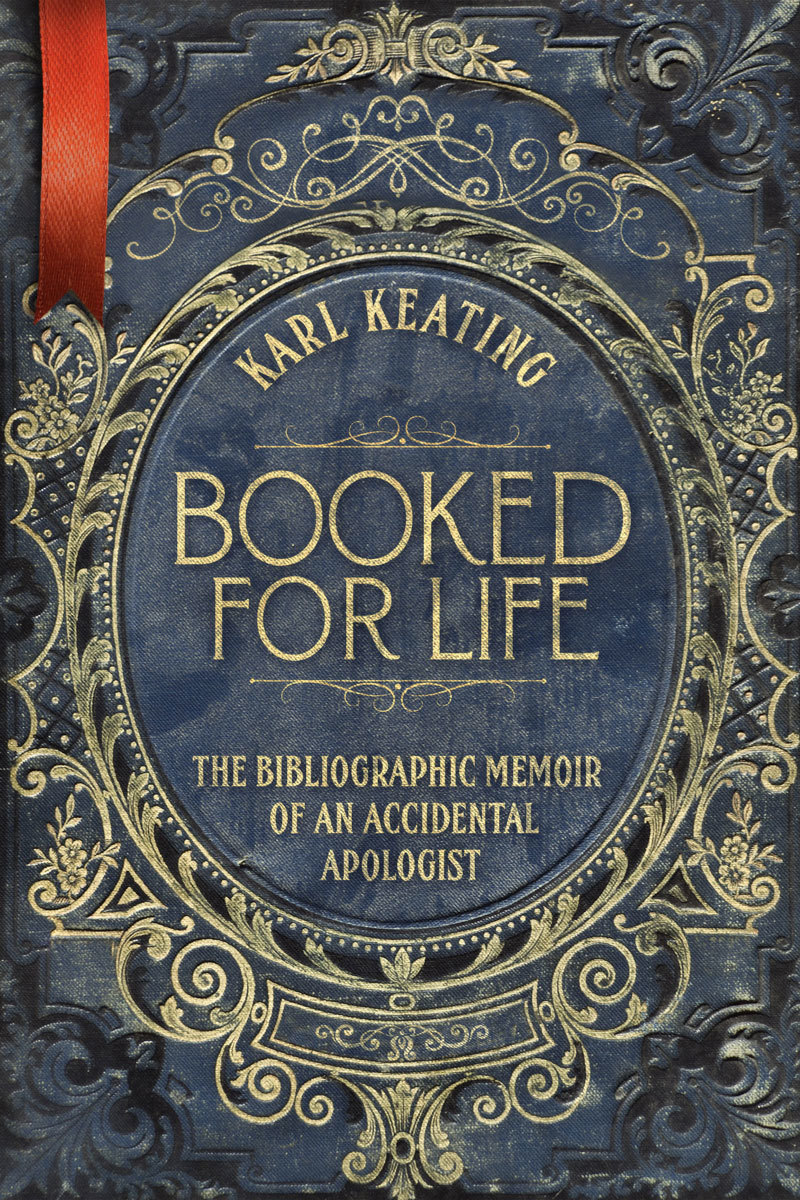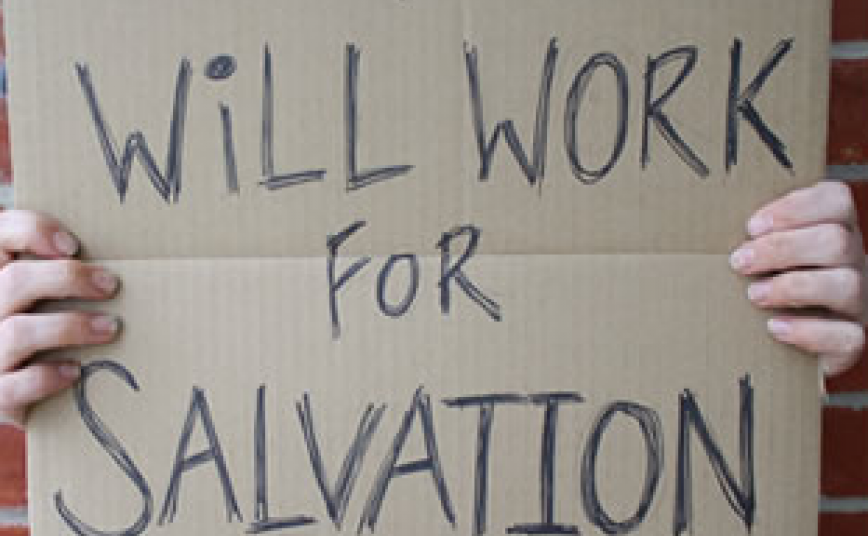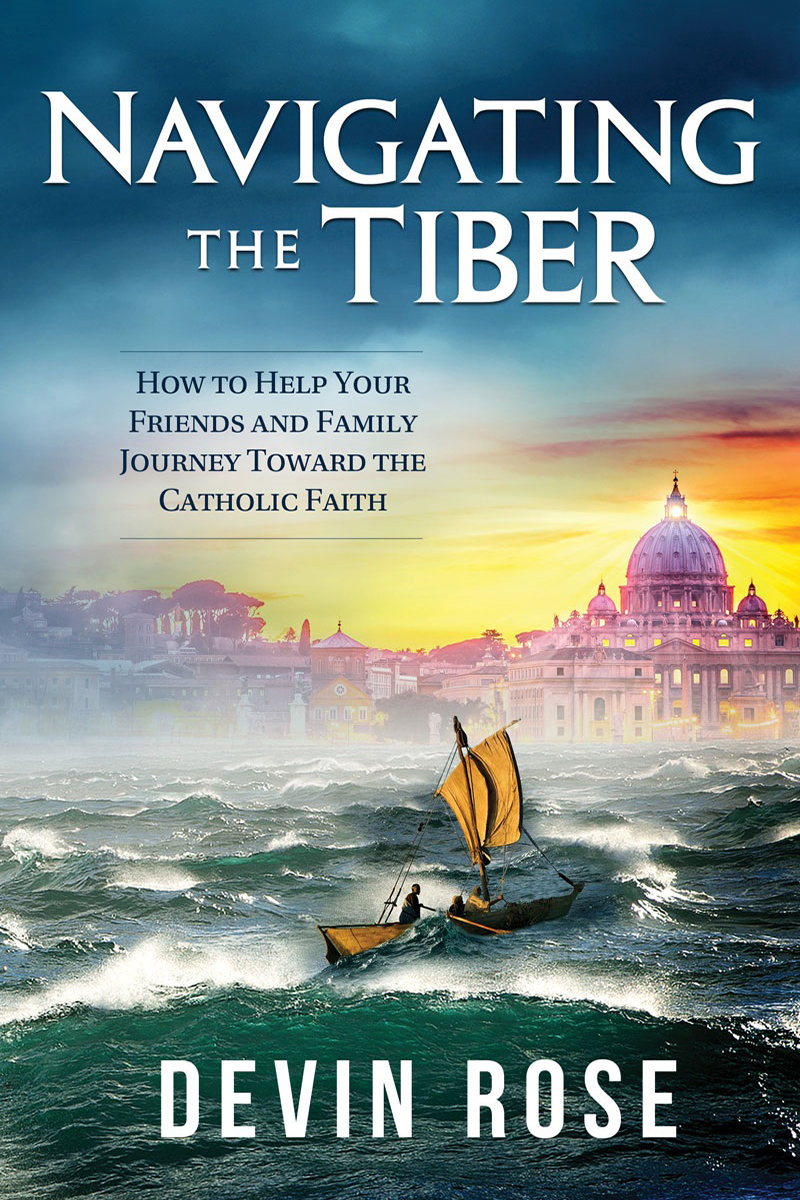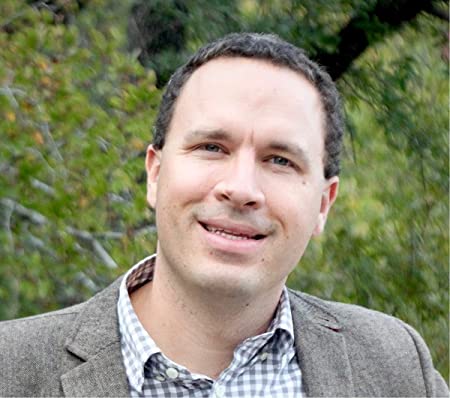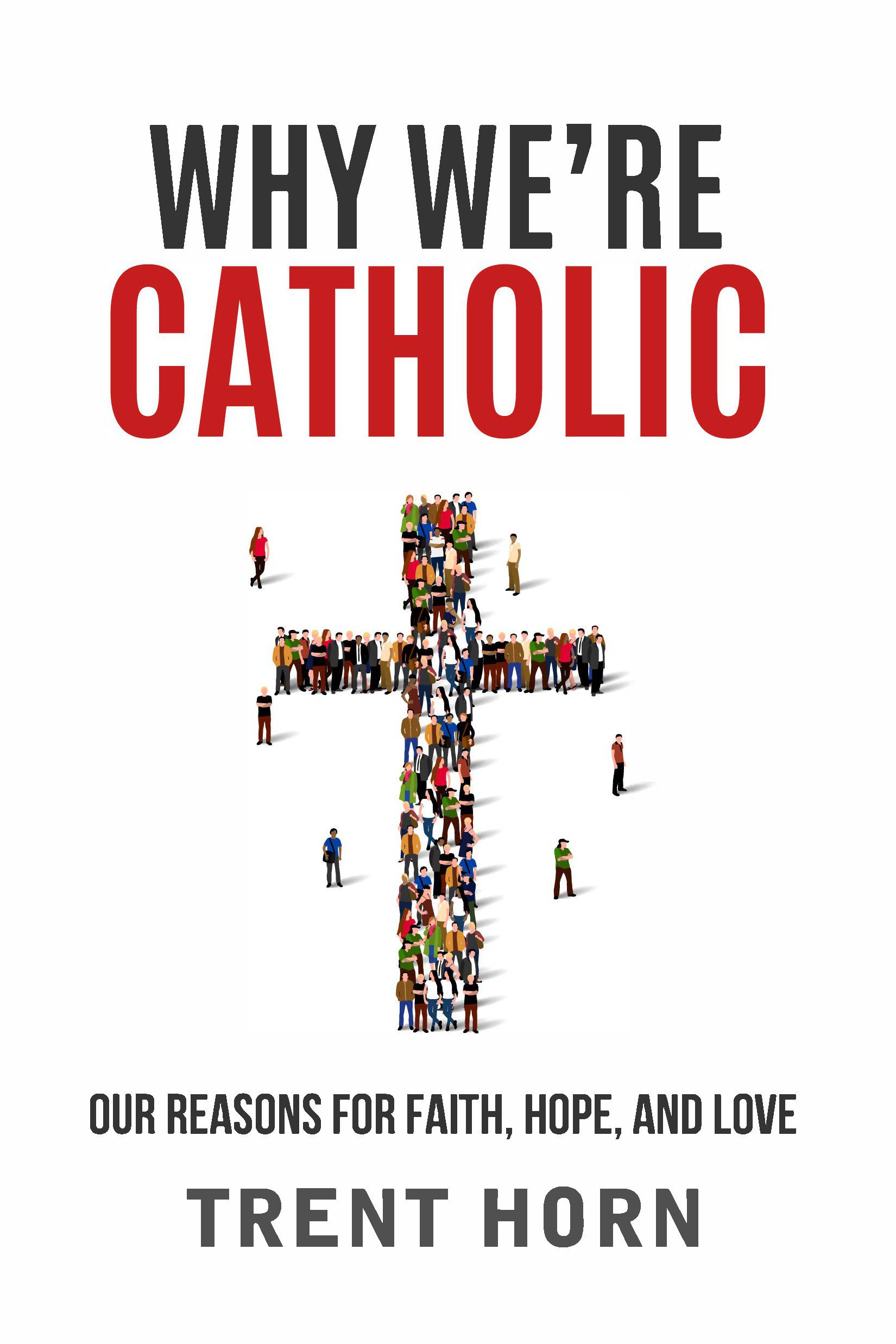Jeremy de Haan was born and raised in the Canadian Reformed Churches, a denomination grounded in the Dutch Reformed tradition. He drifted from his Reformed roots in his early twenties, spending a few years in a Vineyard church but ultimately returned to the Reformed tradition. Sometime later, he decided to pursue the ministry, and completed a Bachelor of Arts degree at the University of the Fraser Valley in 2012 and a Master of Divinity at the Canadian Reformed Theological Seminary in Hamilton, Ontario in 2016. In his fourth year of seminary, Jeremy discovered that the search for the fullness of the Christian faith that had brought him from the Vineyard back to being Reformed was incomplete. He found that the Reformed faith remained strong insofar as it held to its Catholic roots; and insofar as it was worked out according to its own principles it weakened and became unorthodox. This meant that the final step was to return to the bosom of the Church the Reformers had left, to seek her not with the hardness of hostility and prejudice, but with the softness of a child turning to his mother in loving obedience. He and his wife, Arenda, and three children hope to be received into the Church at Easter, 2017.
“They shall ask the way to Zion with their faces thitherward.” – Jeremiah 50:5 (KJV).
I.
Mid-September here in British Columbia’s West Kootenays is the season for shoveling bear droppings from your backyard, droppings full of the ripe plums you didn’t get around to harvesting in time (there’s a proverb in there somewhere…). Meanwhile, mid-September back in Hamilton, Ontario, is convocation time for the Canadian Reformed Theological Seminary, a small but lively seminary tucked away in a neighbourhood on the west mountain. That was where I’d completed my Master of Divinity program in April of this year, having planned for the last six years to be a Reformed pastor. I never could’ve guessed during those years that I’d be absent from my own convocation; that I’d instead be five thousand kilometers away, shovel still smelly in the garage, hollering at the kids so I could watch the ceremony on live-stream from our dinner table. Nor could I have guessed, prior to my fourth and final year at seminary, the reason for my absence: that only a week before convocation, I’d knocked on the door of the local parish church and announced to the surprised priest and secretary our intention to seek communion with the Roman Catholic Church. It no longer seemed right to attend convocation, a celebration of Reformed teaching, when we were in the process of embracing the Catholic faith.
My family and I had driven cross-country in late May, a couple weeks after school was out, settling closer to our roots in the Pacific northwest. We’d been attending Mass at St. Rita’s here in town pretty much since we arrived, and in a congregation of fifty or sixty mostly elderly people you and your three young kids don’t exactly slip in unnoticed. But we’d been attending with a certain amount of distance in our hearts, as we’d arrived with many unanswered questions, and hadn’t introduced ourselves. So when I popped into the office that September morning and sat down with the priest, I explained who we were and where we’d come from. Of course, the fact that I’d recently graduated from a Reformed seminary was an attention grabber, and he asked all sorts of questions.
But if it provokes questions for a Catholic priest, it probably provokes even more for a Reformed person. Probably all the subtle variations of, “What on earth?” I don’t know that I can sufficiently answer that, but it’s worth a shot. While I won’t go into detail here about every doctrinal question, for the sake of space, I will give you the shape of my overall thinking over the last year.
II.
At the close of the summer of 2015 I’d just finished a preaching practicum in Fergus, Ontario. I was looking forward to my fourth and final year at seminary and to the ministry beyond it. Up to this point, my views on the Catholic Church were pretty normal for a Reformed person. I didn’t believe that all Catholics were damned, but if some were going to be with me in heaven it would be in spite of all the rubbish their Church taught – certainly not because of it. After all, in the very name “Reformed” itself was a rebuke of the Catholic Church, for it was the apparent corruptions of that Church that the Reformers had sought to reform. Catholics prayed to dead people, they worshipped Mary, they thought the blood, hair, bones, and organs of a dead saint could be magical, they bowed down to idols, their claims to papal and magisterial infallibility could be debunked by pointing to the many inconsistencies and historical falsehoods; name any teaching of Scripture and Rome had buried it beneath idolatry, superstition, and man-made doctrines. Catholics had mastered the art of erring, and had solemnly festooned their errors with incense, candles, chants, and fancy robes. Considering all that, it never really crossed my mind to take Rome seriously.
But although that was the official view of my mind, at another level those prejudices had been challenged as the years went by. Many of my favourite writers were Catholic, like J.R.R. Tolkien, G.K. Chesterton, and Anthony Esolen; or were from the Catholic wing of Anglicanism, like C.S. Lewis, T.S. Eliot, and Roger Scruton. Reformed readers will recognize some of those names, as they’re pretty much the patron saints of hipster Christians of any stripe. But if John Calvin was right to point to the “corruptions by which Satan, in the papacy, has polluted everything God had appointed for our salvation,”1 then how could men who had bought into that satanic pollution have anything worthwhile to say about the Christian faith, and how to understand the world through the lens of that faith?
In fact, in every encounter I had with the Catholic Church, whether through her writers, her music, her philosophy, her prayers, or her actual members, my prejudices were being challenged. I simply left it in the “inexplicable” category as to how so much insight, virtue, and holiness could be present in a Church that had long since given orthodoxy the bum’s rush.
I did have questions, too, about the Reformed faith. I didn’t see how some Reformed doctrines fully squared with the data of Scripture, and there were non-Reformed doctrines that seemed to equally satisfy the evidence. There were questions of Church authority and confessional authority. But none of these posed any real challenge to my thinking, and I never called into question the validity of the Reformation as a whole. Being Reformed was about much more than answering every intellectual question, anyways. I loved the Reformed Church. I loved her history, I loved her teachings, and I loved above all her emphasis on Scripture. If there were loose ends, apparent inconsistencies, and other inexplicable features of my faith, I merely chalked it up to the fact that life was full of these things. No reason to go all funny in the head about them.
III.
And so I began fourth year. But only a couple weeks into the first semester I came across the philosopher Peter Kreeft’s conversion story on YouTube. I’d read a little of Kreeft’s writings before, and they impressed me as being from the pen of a thoughtful and godly man. I knew he was a Catholic, but what I didn’t know until I saw the title of the video was that he had converted to Catholicism from being a Protestant. And when I started watching the video I realized he had converted from a Dutch Reformed background very similar to mine. That fact alone struck me. Here was a man who seemed trustworthy and thorough in his thinking, who grew up very similar to me, yet who had looked seriously at the Catholic faith and was compelled by what he found to leave the Reformed faith. If Rome was so shot through with false teachings, then how could anyone find the truth there? How could anyone leave what was obviously true for what was obviously false?
It was one particular question of his that unsettled me: if a modern Catholic and a modern Protestant could hop in a time machine and travel back to the early Church, which of the two would feel more at home? I’d always just assumed that the Reformation was a return to the early Church, a pressure-washing of papal grime off the pillars of the Christian faith. After all, if the Reformers were recovering the true apostolic teachings, then Reformed churches should at least look like the churches that the Apostles left behind. I’d never looked much into it, but until these assumptions were challenged I didn’t realize how central they were to my thinking. According to Kreeft, it was discovering that the early Church was essentially Catholic that eventually led him into the Catholic Church. I knew then that I had to look into this myself. There is only one faith, as the New Testament makes clear, and if it was not Rome but the Reformers who had departed from that one faith, then I’d be making some serious life changes.
Within a day or two of watching the video, I’d gone downstairs at the seminary library to the Church Fathers section and checked out the letters of Ignatius. Ignatius wrote his letters only a couple decades after the Apostle John died, and tradition has it that Ignatius was one of John’s disciples. Actually, tradition has it that Ignatius was one of the children blessed by Jesus, too.
So I read his letters, and it was evident quite quickly that the faith this man wrote about was not the Reformed faith. He called the bread of the Eucharist “the medicine of immortality”;2 he wrote that “[the heretics] abstain from the Eucharist and from prayer, because they confess not the Eucharist to be the flesh of our Saviour Jesus Christ, which suffered for our sins, and which the Father, of His goodness, raised up again”;3 and he wrote, “Wherever the bishop shall appear, there let the multitude [of the people] also be; even as, wherever Jesus Christ is, there is the Catholic Church”.4 This was about twenty years after the last Apostle died.
IV.
It was at this point that all those other questions and challenges that had lazed about near the horizons of my thinking came bearing down in full force. I was deeply moved by it all, to the point where a couple weeks later I was sitting in my mentor professor’s office telling him, “I think I’ve taken the first steps on the road to becoming a Catholic.” I told Arenda, too, and rather unexpectedly she confessed that she also had been drawn of late to the Catholic Church. That’s her story, and I’ll leave it to her to tell it if and how she wants to; but the point here is that we have walked this path together from the beginning.
I didn’t stop preaching or teaching catechism, however. I’d gone through phases before in life and I figured a good headshake was coming, after which all the familiar Reformed constellations would realign in my theological sky. I’d let the inertia of my life carry me along, and perhaps one day I’d chuckle over it all in my study as I worked on a sermon series through the book of Romans. That was my hope, anyways. As I write this, and enter into the frame of mind I had then, I’m reminded how confusing a time it was. I was in my fourth year of seminary, the ministry within reach, and the last possible thing I could ever imagine happening to me, short of becoming the next Joel Osteen, or the frontman of Queen, really was happening.
But despite the confusion, it was as if a crystal clear bell had sounded in my soul. I did not understand it, and dealt with it every way I could think of: by ignoring it, by fighting it, by hating it, by fearing it, by praying about it, by fasting about it, by writing a hundred thousand words about it, and by reading Scripture with its sound reverberating in my shriveled heart. And no matter what I did, it grew.
It grew throughout the semester, and it grew loud and persistent enough that I contacted a local Catholic priest. There were so many questions by that point, mid-November, that I had to sit down with a real-life Catholic and turn out the contents of my heart. Father Adam generously agreed to come over to our house, sit down with Arenda and me, and answer whatever blunt and awkward questions we had for him. So we sat in the living room, Chimay white beers in hand, and Arenda and I interrogated him about everything from praying to saints to the quality of parish life. I will be forever grateful for that conversation, for his sincerity and openness about the state of the Church. It was clear that he was not there to sell Catholicism to us, since he spoke plainly about nominal Catholics and the reality of sometimes meager parish life. Also, he later introduced us to a Catholic couple who got to deal with all the questions we didn’t get around to asking him. Their friendship put a face to devout Catholics – and it was not an unfamiliar face.
I spent all of my spare time, and even time that was not spare, researching the Catholic question. On the Catholic side, I read, among others, the website Called To Communion; I read John Henry Newman, a nineteenth-century convert to Rome from Anglicanism. On the Reformed side, I read The Shape of Sola Scriptura by Keith Mathison, Papa Don’t Pope by Doug Wilson, and Are We Together? by R.C. Sproul. I read Reformed blogs like Green Baggins, Triablogue, and Reformation 500. I reread articles from my old Modern Reformation magazines. I watched YouTube debates. I read Scripture with Catholic eyes and with Reformed eyes. I read some of the more famous works of the Church Fathers.
The result of all this was that I was near despair by the end of the semester. It seemed to me that if someone wanted to build a space ladder, all he had to do was make a stack of all the Reformed and Catholic writings that show why the other is wrong about the sacraments, or justification, or the atonement, or Church government, or the communion of saints, etc. If so many intelligent and amply-informed scholars could not agree on these issues, how could I make a decision either way? It seemed that if I wanted to be a faithful disciple of Christ, it meant dealing with a just-shy-of-infinite amount of baggage first. I knew that this could not be why Christ took on human flesh and entered into human history, but as the first semester of fourth year came to a close, this was what troubled my soul.
V.
I was ready to quit school by this point. I canceled my remaining preaching engagements and stopped teaching catechism, as I realized that no immediate headshake would be forthcoming. I ran some of my specific questions past a couple professors and a pastor friend of mine, but these discussions merely confirmed that I needed the one thing I simply didn’t have: time. I was strongly tempted to walk away from my schooling and spend my time instead pursuing the Catholic question to the full.
It was Father Adam who convinced me not to quit. I met with him one frigid January morning in the Chancery Office next to the Cathedral Basilica of Christ the King in downtown Hamilton. He assured me that my eternal salvation did not rest on resolving these questions immediately, which was largely driving my soul ragged; and he reminded me that God is a God of mercy, and all truth is His. I had an opportunity at school to study the Reformed faith in-depth and to ask of it, “is it true?” How could I know if I did not understand it? I might as well take this time, he said, to complete my Masters and to do my best to understand what I was being taught. He advised me to put aside the heavy reading; essentially, to put the whole Catholic question away for the time being.
That was just the advice I needed. I relaxed, once again trusting in God’s mercy rather than in my own efforts to find answers. I devoted myself to my school work, and ignored the world of Catholic vs. Reformed apologetics. I left the whole thing as an open question, one that I could at the moment safely ignore; and embraced Reformed teaching anew for the purpose of understanding and testing it.
But through this all, that bell sounded. It resonated clearly and faithfully in defiance of everything else. It fended off the darkness of despair, and prompted me to bring every question I had before the throne of grace. It acted as the gravitational pull of heaven, fixing me within the orbit of grace and truth. Back in third year I’d written an exegesis paper on Daniel 10, a chapter in which Daniel devotes himself to prayer and fasting. When he’s visited by an awesomely holy angel, the divine messenger tells him, “Fear not Daniel, for from the first day that you set your mind to understand and humbled yourself before your God, your words have been heard, and I have come because of your words” [Dn.10:12 ESV]. I wasn’t in search of a revelation, as Daniel was, but I did badly want understanding. So I devoted myself to fasting and prayer in the hopes of being blessed with at least enough humility to follow the truth when I once again had the time to pursue it.
I returned repeatedly to my baptism: if the Catholics were right, then with the waters of baptism the grace and love of God had been poured into my heart as an infant, I had entered into covenant fellowship with God, and I had the right to call Him Father. If the Reformed were right, then I was part of God’s covenant and I had the right to call Him Father. Either way, I was a baptized child of the Triune God, and I had covenantal grounds on which to appeal to Him. So I pleaded with God as one washed with the waters of the holy sacrament, one ushered into real, covenantal fellowship with my heavenly Father. And when all human answers failed, when all human thoughts failed, when all human emotions failed, then what remained was an inexpressible groaning of the heart. This groaning was my constant companion, my constant prayer. And as I walked with this companion I was comforted, for I knew that “the Spirit himself intercedes for us with sighs too deep for words” [Ro.8:26 ESV].
So it was that I stumbled across the finish line back in April. My heart was restless, not with the aimless restlessness of boredom, but with the kind born of yearning for its true home – the thirsting and fainting “as in a dry and weary land where there is no water” [Ps.63:1 ESV]. It was a relief to finally reach what I had looked forward to for months, a time of immersing myself in this question, and a time of opening my thoughts to the analysis of others. I could move again, and it felt good to have the wind on my face.
VI.
This newly-acquired leisure, however, coincided with our move out west. So although I’d hoped to stay in contact with my professors about these questions, this was not to be. On the other hand, moving away brought us some emotional space, some freedom from social pressure. When you are in a community of people who all think the same way, the temptation is to follow suit, even if that means not confronting, and perhaps even distorting, the contents of your own heart and mind when those contents set you at odds with everyone else. Time away can refreshingly de-clutter your inner life, and help you focus the eye of your heart upon God.
So I spent the summer reading, praying, and roughly adventuring my way through the many questions. And if there is one verse that could sum up the whole process, it would be Proverbs 18:17 [ESV]:
“The one who states his case first seems right, until the other comes and examines him.”
All my life I’d been presented with the Reformed case: the Reformed case for Scripture, the Church, the gospel. I’d also been presented with the Reformed case against the Catholic Church. As a result, I had obviously been critical of Catholic teaching. I didn’t think Catholics knew much about grace, or love, or faith, focused as they were on their own efforts to make things right with God. I perceived their religion as largely external, not touching the heart, locked in submission to a long-since-apostatized authority. In fact, I thought that the Catholic Church must be full of tortured consciences, for I looked at her teachings through the lens of Luther’s experience. Rome, I presumed, placed upon you the burden of earning your own salvation through penances, Hail Mary’s, indulgences, and bowing down before the tongue of St. Anthony of Padua. But because none of these things are able to save, for we are not saved by works (much less by superstition and idolatry!), the soul seeking salvation through them would only find its burden increased, as Luther found. I was under the impression that there must be in the Catholic Church countless souls crying out from beneath the weight of these teachings for the very relief that Luther found in his doctrine of justification.
But the late Bishop Fulton Sheen famously wrote: “There are not one hundred people in the United States who hate the Catholic Church, but there are millions who hate what they wrongly perceive the Catholic Church to be.” And when I was presented with the case for Catholicism by Catholics, a much different picture emerged. I found a Christ-centred, God-glorifying, Scripture-based faith. In fact, I kept thinking, “This must be a trick. What am I missing? Because what I’m seeing is a Church whose teachings reveal the full dimensions of Christ’s love, God’s glory, and the beauty of Scripture. This love, glory, and beauty are filling the vision of my soul, and thrilling me to my depths – but that can’t be! Hadn’t the Catholic Church abandoned all those things and chased after man-made corruptions?”
All I had seen before was a religion corrupted by human inventions. I had not seen how the whole Catholic faith holds together in Christ, that its unity, energy, and glory are found in the nature of God Himself. I used to wonder why the early Church had fought so tenaciously over the doctrines of the Trinity and the two natures of Christ while, as our Dogmatics textbook put it, “the earliest Church Fathers . . . had no clear understanding of [justification] and its relation to faith.”5 Why the Trinity and not justification, when Scripture lay so much emphasis on the latter? In the first place, the Church Fathers understood justification quite well – just not the Reformed understanding of it. But secondly, the reason behind all the fighting about Christology and the Trinity was that those doctrines are the interpretive keys to the rest of the Catholic faith. You can’t understand justification, or the sacraments, or the Church, without understanding the nature of God and the reality of God in the flesh. The very essence of Christianity lies in the mystery of the God who is a Triune fellowship of love, and in the mystery of God becoming man in order to bring man into the fellowship of God.
While I had understood this as a Reformed person, it was not until I began studying Catholic theology that the harmony of all these truths struck home. I found that one Catholic doctrine after another was unlocked by asking what it said about Christ and the Trinity. I found that the essence of Catholic teaching lay in seeking after and being formed by the love, mercy, and generosity of a God whose very nature it is to give.
VII.
This greatly simplified things. I had mentioned earlier the tension of being confronted with a space ladder of reading material while at the same time recognizing that such study was not the nature of true discipleship. And it was discovering that the gravity of the Catholic Church drew you toward the Trinitarian Life of God that made the space ladder seem, well, tiny and insignificant. What were all the arguments of man when compared to the infinity-encompassing love of the Father Almighty? In my journal I had copied a quote from the great Church Father, Athanasius:
“But the Savior effects such great things every day – drawing to piety, persuading to virtue, teaching about immortality, leading to a desire for heavenly things, revealing the knowledge of the Father, inspiring power against death, showing himself to each, and purging away the godlessness of idols; yet the gods and the demons of the faithless can do none of these things.”6
According to Athanasius, one could know the power of the living Christ over and against the false gods and demons by the ever-present effects of Christ in our lives. Only Christ could draw men toward holiness and heaven, toward knowing the Father, and away from the fear of death and all the earthly trappings that fear represented. The devil could not do any of this. So if the Catholic faith only made more sense as one contemplated the Trinity and the Incarnate Son of God, then it could not be a deception of the devil. If the deeper you went into the Catholic faith the more your heart was filled with a vision of love – God’s love for man, and man’s love for God and neighbour – then it could not be a deception of the devil.
Another thing that simplified the whole search was the role of faith in seeking understanding. I found that some Reformed theologians made arguments against the Church that were very similar to the arguments of unbelievers against Scripture. Those who find nothing but disunity, inconsistencies, and contradictions in Scripture are not necessarily poor readers – it’s that their reading is not governed by faith in Christ. Paul writes to the Corinthians, “The natural person does not accept the gifts of the Spirit of God, for they are folly to him, and he is not able to understand them because they are spiritually discerned” [1Cor.2:14 ESV]. Finding unity in Scripture is not primarily a hermeneutical method. It’s primarily a reaching through the page with our souls to the one true God. We have one Lord and one faith, and it’s through that reality that we read Scripture.
But what is true of the Word of Christ is also true of the Body of Christ. The Church is a supernatural society, a reality that we hold to by faith, as both the Apostles’ and Nicene Creeds attest. Believers walk by faith, not by sight [2Cor.5:7]; but those who lack faith walk only by sight. Because of that, all they see when they look back across the long ages of the Church and her many documents and teachings, is disunity, inconsistencies, and contradictions. The Church Fathers are read with a focus on their disagreements; the papacy is rejected from a lack of historical evidence; councils are ignored as on the surface they seem to contradict each other. The stress is on the messiness of the teachings of the Church, and thus on her unreliability as an object of faith and source of truth. This perspective sees the Church as governed merely by human teachers – redeemed humans, sure, but no less prone to the same trappings as any other human teachers – just as unbelievers look at Scripture as merely a collection of human writings, prone to all the same flaws as other human writings.
Instead, when I started looking at her teachings as those of a supernatural society wrought upon earth by the Spirit of God, and protected by the divine kingly wisdom of Jesus Christ, then the picture dramatically changed. When I looked at her through the unifying eyes of faith, I found remarkable consistency and illumination. The doctrines of Mary, for example, were not opposed to the truth of Christ’s redemptive work, but actually proclaimed the extent and power of His work. The veneration of images was not opposed to the essence of God, but proclaimed the gospel reality of the Christ who is “the image of the invisible God” [Col.1:15]. The Catholic doctrine of justification was not opposed to grace, but proclaimed the fullness of that grace in enabling us to be “partakers of the divine nature” [2Pe.1:4]. And much more, extending back through time and across the world to Christ Himself. This Church demanded that I look at her by faith, not by the sight of evidence; and apart from Christ, and faith in Him, none of it could make any sense. But through faith in the Church, which is faith in the Christ whose fullness the Church is [Eph.1:22-23], the Catholic faith was manifested in its supernatural unity – and I had nothing left to say against it. The bell had won me over, for it was the faithful, persistent, and ringing voice of my Shepherd.
VIII.
Because of all this Arenda and I are no longer of one mind with the Christians who raised us. Through our studies and prayers, we have become convinced that the Roman Catholic Church is the one, holy, catholic, and apostolic Church that Jesus Christ founded, that the Reformers erred in not submitting to her, and that it is our duty to submit – even where we do not yet understand. Yet we seek, know, and love Jesus Christ precisely because of those who raised us. We were blessed to be given parents, pastors, elders, and professors who showed us the paths of life that are found only in Christ, and they showed us the beauty and significance of the redemptive work that He purchased with His life on Calvary. They showed us the Scriptures, and taught us to study and cherish them, and to submit to them in all things. We are eternally grateful for these gifts, and carry those gifts forward in our hearts. It has been our joy to find, not a repudiation of any of these things, but the fullness of them as we’ve journeyed toward the Catholic Church. We hope to be received into communion with her come Easter.
1. Calvin, Institutes 4.1.1
2. Ignatius, To the Ephesians, 20
3. Ignatius, To the Smyrneans, 7
4. Ignatius, To the Smyrneans, 8
5. Louis Berkhof, Systematic Theology, 511.
6. Athanasius, On the Incarnation, 31. http://www.newadvent.org/fathers/2802.htm, accessed October 17, 2016.
Love,
Matthew
